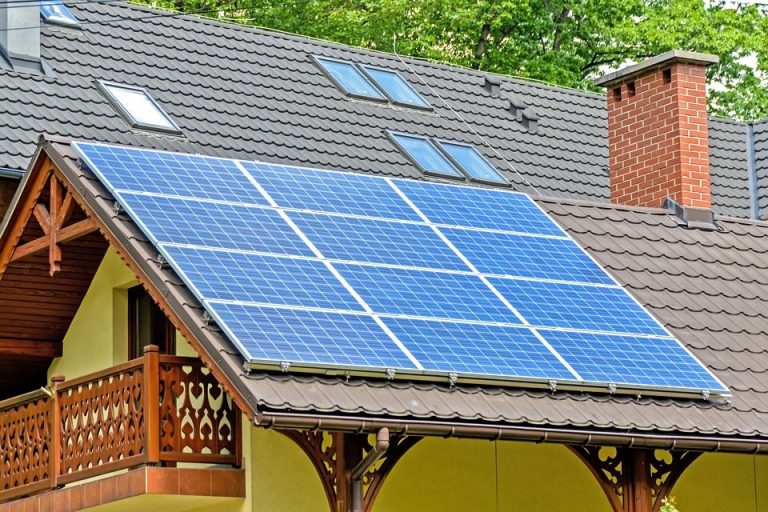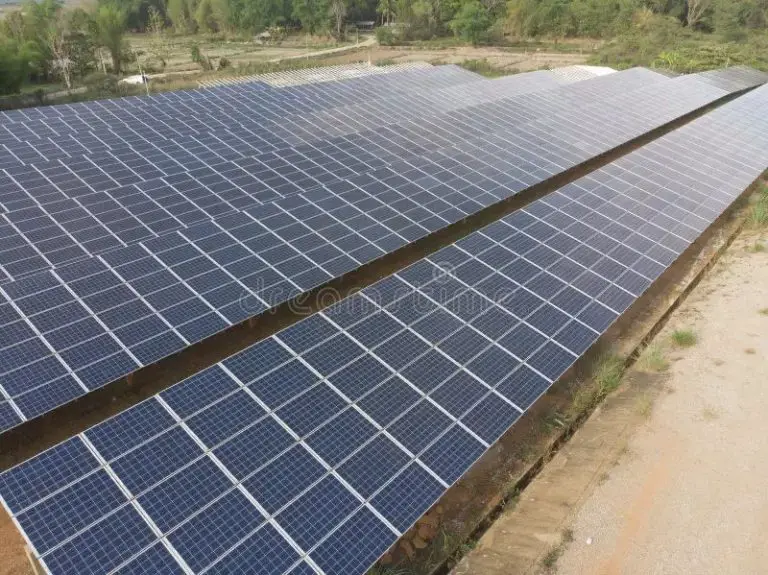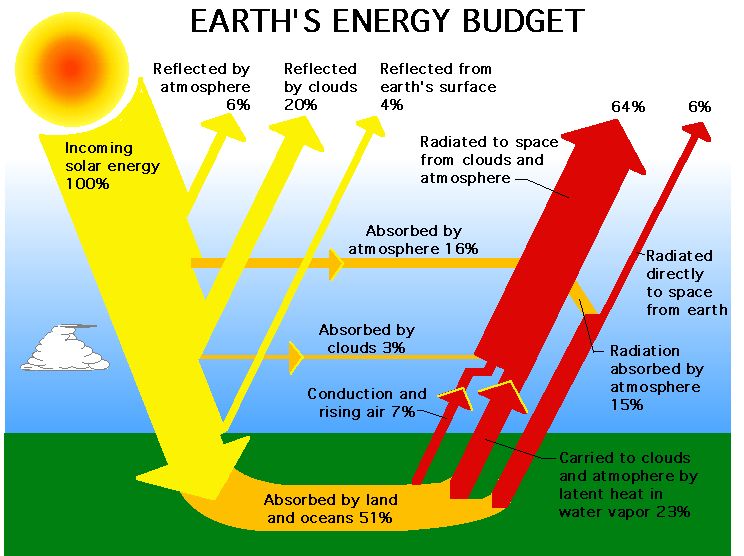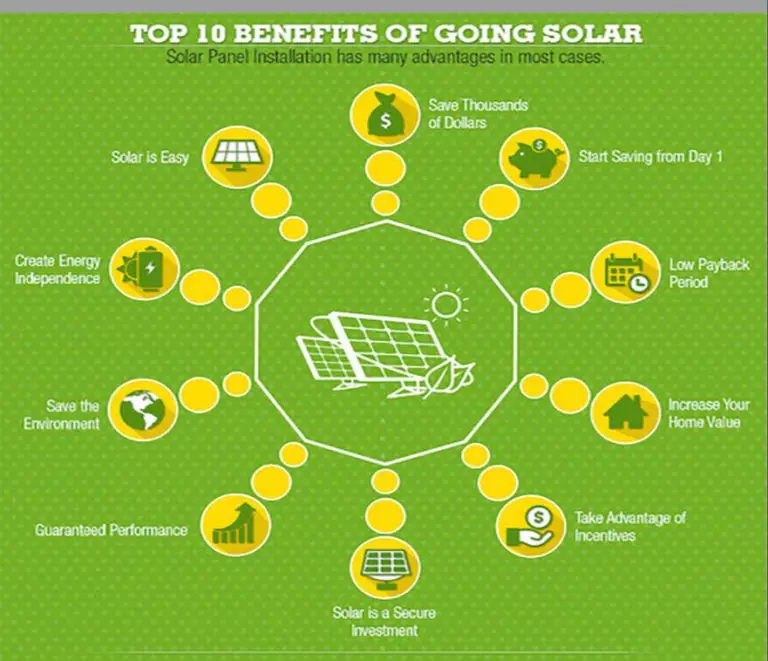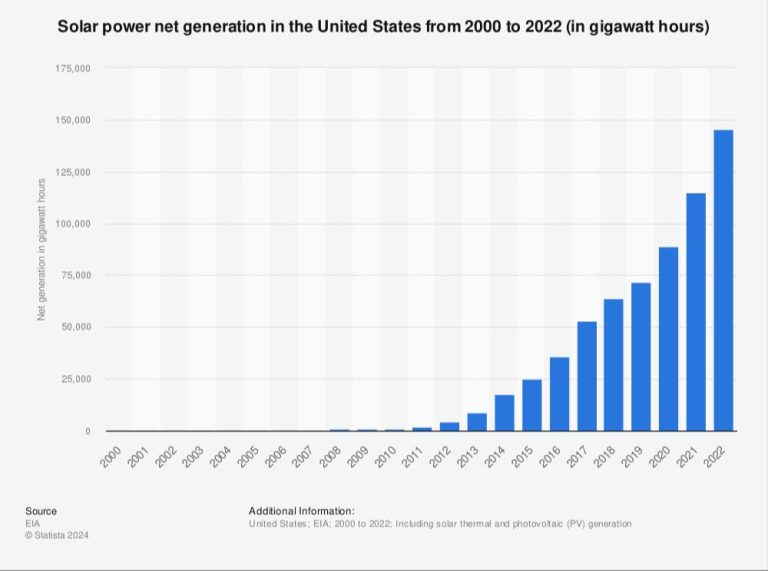How Does A Solar Panel System Work Step By Step?
A solar panel system is an arrangement of solar panels, inverters, batteries, wiring, and other electrical components that work together to generate electricity from sunlight. The main components of a solar panel system are:
- Solar Panels – Photovoltaic panels that absorb sunlight and convert it into DC electricity.
- Inverters – Devices that convert the DC electricity from solar panels into AC electricity for use in your home.
- Batteries – Store excess electricity generated during the day for use at night.
- Charge Controller – Manages the charging and discharging of the batteries.
- Wiring – Carries electricity between all the system components.
- Racking – The mounting structure that holds the solar panels in place.
Properly installing these components allows you to generate clean, renewable electricity from the sun to power your home.
Solar Panels
Solar panels, also known as photovoltaic (PV) panels, convert sunlight directly into electricity. They are made up of many individual solar cells that are wired together. The solar cells contain a photovoltaic material, usually silicon, that absorbs photons from sunlight and knocks electrons loose, allowing them to flow freely. This photon excitation process generates an electric current.
When sunlight shines on a solar cell, the absorbed photons transfer their energy to the electrons in the cell. The energized electrons are able to escape from their normal positions in the atoms of the semiconductor material. The free electrons flow through the material to produce an electric current. The complementary positive charges that are also created are called holes and flow in the direction opposite of the electrons.
Solar cells have one or more electric fields that act to force electrons freed by light absorption to flow in a certain direction. This flow of electrons is a current that we can harness. Conductive metal plates on the top and bottom of the cell collect the electrons and transfer them to wires, allowing the current to flow through an external circuit.
A single solar cell generates a relatively small amount of power. To increase power output, solar cells are connected together in series long chains to form solar modules or panels. The currents of each cell are additive, so the panel can have sufficient output voltage for many uses. Many solar panels combined together and connected to inverters produce solar arrays large enough to power homes, businesses, and utilities.
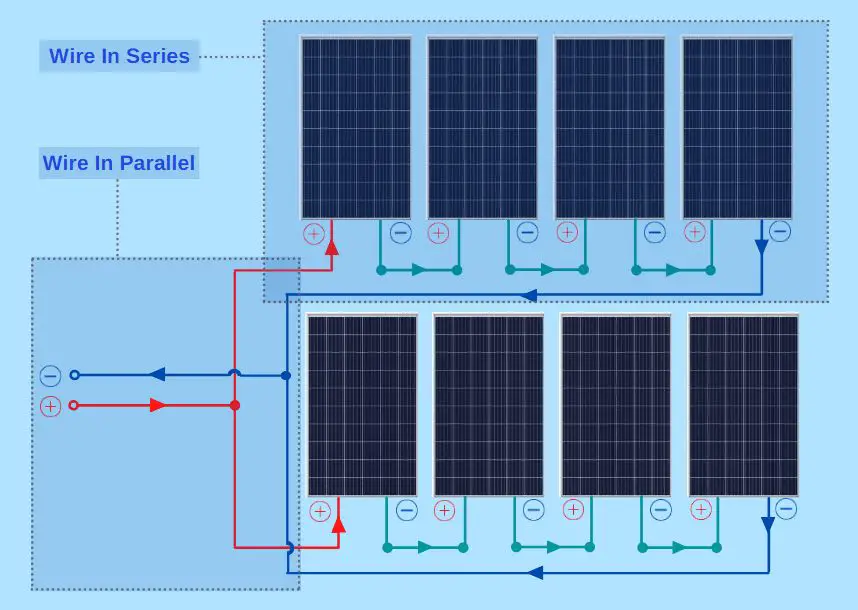
Inverters
Inverters play a crucial role in solar panel systems by converting the DC power generated by the solar panels into AC power that can be used to run appliances and feed into the electrical grid. Here’s an overview of their function:
Solar panels produce DC power, but most appliances and equipment run on AC power. An inverter converts the DC electricity into usable AC electricity. Without an inverter, the DC power produced by solar panels cannot be used in homes and businesses.
Inverters also regulate the voltage and frequency of the AC output to match the specifications required by electrical grids. This synchronization allows solar panel systems to connect to the grid and feed excess power back into it.
Advanced inverters also maximize energy harvest from the solar array. They have MPPT (maximum power point tracking) to get the optimal power output from solar panels under changing conditions like clouds or shade. Some large inverters also split themselves into multiple MPPT channels to optimize energy harvesting from different sections of the solar array.
So in summary, inverters convert DC electricity into usable AC power, regulate voltage and frequency, allow grid connection, and maximize power harvesting from solar panels. They are a vital component in any solar energy system.
Batteries
Batteries play a key role in solar energy systems by storing excess electricity generated by the solar panels during the day for use at night or on cloudy days. They allow solar panel systems to provide power even when the sun isn’t actively shining on the panels.
There are two main types of batteries used in solar systems – lead acid batteries and lithium-ion batteries. Lead acid batteries are less expensive but don’t last as long as lithium-ion. Lithium-ion batteries have a longer lifespan and higher performance but cost more upfront.
When selecting a battery, some key factors to consider are:
- Energy capacity – how much energy can the battery store
- Voltage – batteries must be compatible with solar equipment voltage
- Physical size – battery bank should fit available space
- Lifespan – average years of useful life under regular cycling
- Performance in hot or cold temperatures
- Reputation of manufacturer
- Costs – upfront purchase price and maintenance costs
Properly sizing the battery bank to meet your energy needs is crucial so you don’t underpower or overpower your system. Work with a qualified solar pro to select the right battery setup.
Charge Controllers
Charge controllers play a crucial role in solar panel systems. They regulate the voltage and current from solar panels going into the battery bank to prevent overcharging. Charge controllers protect batteries from overcharging by limiting the rate of current flow or disconnecting the solar panels when the batteries reach a set voltage. This extends the life and performance of the batteries.
When batteries are overcharged, it leads to excess gassing, electrolyte loss, internal failure, and even potential explosion and fire hazards. Charge controllers prevent this by dynamically adjusting the rate of charge based on the battery’s state of charge. They monitor battery voltage and reduce or stop the charging when the batteries are full.
Some key functions of charge controllers include:
- Prevent battery overcharge by limiting/regulating voltage and current
- Prevent battery discharge at night by blocking reverse current flow
- Protect against short circuits and reverse polarity connections
- Provide Load Control by managing connection to electrical loads
- Display data like voltage, current, battery level, faults
- Provide lighting and device control capabilities
By managing the flow of electricity, charge controllers maximize solar power utilization and battery life for an efficient solar energy system.
Wiring
Wiring is a critical component in a solar panel system that connects all of the equipment and allows electricity to flow properly. Here are the key steps involved in wiring a solar panel system:
First, determine the wire size needed based on the amperage and voltage in the system. For residential systems, 10-6 AWG is commonly used. Use larger wire sizes for higher system wattages to prevent overheating and voltage drops.
Run conduit from the solar panels to the inverter location and pull the wires through the conduit. Use UV-resistant conduit and wiring for any outdoor runs exposed to sunlight.
Connect the solar panel wire leads to combiner boxes, fusing each string or pair of panels together. Run a larger home run wire from the combiner box to the inverter.
Connect the home run wire to the inverter’s DC input terminals, ensuring proper polarity. Connect the inverter’s AC output wires to an AC disconnect switch or electrical panel.
For battery-based systems, connect additional wires from the charge controller to the battery bank and inverter. Use large gauge wires for minimal losses.
Clearly label all wiring connections and terminals. Install wire management, strain relief and grounding as required by electrical code.
Test all wiring under commissioning. Repair any loose connections or faults before operation. Maintaining tight, corrosion-free connections ensures safe and reliable power flow in the solar system.
Racking
Solar panels need to be mounted properly to maximize sun exposure. There are a few main options for racking systems:
-
Rooftop mounts – These attach the solar panels directly to the roof, either parallel to the roof or tilted at an angle. Pros are they take up minimal space and are out of the way. Cons are limited tilt angle and possible roof penetrations.
-
Ground mounts – Freestanding racks are installed in open spaces and allow full tilt control. Pros are maximum sun exposure and no roof penetrations. Cons are taking up yard space and being more visible.
-
Tracking mounts – These racks automatically tilt to follow the sun throughout the day. Pros are increased energy production. Cons are higher cost and maintenance needs.
The optimal racking system depends on roof type, climate, space available and local permitting laws. Proper installation is key to endure wind, snow and long-term durability.
Installation
Installing a solar panel system is a complex process that should be done by qualified professionals. However, it’s helpful to understand the basic steps involved. Here is an overview of the solar panel installation process:
Site Survey – The installer will visit the site to evaluate the roof or ground area where panels will be placed. They determine the best locations for panels to maximize sun exposure. They also look for potential issues like shading or structural concerns.
Permitting – Most areas require permits for solar installations. The installer applies for the relevant building permits from local authorities. Permits ensure the system meets all codes and regulations.
Mounting System – Racking is installed to securely mount panels on rooftops or the ground. The ideal tilt angle is calculated to optimize energy production at the site’s latitude.
Panel Installation – Panels are mounted to the racks and wired together. The installer ensures proper spacing between panels and secures them firmly.
Inverter Mounting – The inverter is mounted and wired to panels. This device converts the DC current from panels into usable AC current.
Electrical Connections – The system is connected to the home’s electrical panel and utility meter. Proper wiring sizes are used to handle the system’s output.
Inspections – The authorities inspect the system to ensure correct installation and safety. This must be completed before final approval.
Activation – The system can be activated after passing inspection. The installer completes final testing to ensure proper functioning.
Monitoring
Monitoring a solar panel system allows you to track how much energy the system is producing. There are a few main ways to monitor solar panel output:
-
Inverter monitoring: Most solar inverters have built-in monitoring that tracks system production. This allows you to view daily, monthly, and yearly energy production. Many inverters have web or mobile apps to view the monitoring data.
-
Production meters: Dedicated production meters can be installed to measure the energy output of the solar panels. These will show how much electricity is being generated in real-time and over time.
-
Energy management systems: More advanced energy management systems can provide detailed monitoring and analysis of solar production, consumption, net metering, etc. They compile data from the inverter, utility meter, and other sources.
Monitoring provides insight into system performance. It can help identify any production issues and ensure the solar panels are operating as expected. Regular monitoring is recommended to maintain optimal performance.
Maintenance
Properly maintaining a solar panel system is crucial for keeping it running at peak efficiency. Here are some tips for solar panel maintenance:
Cleaning – Solar panels should be cleaned at least twice a year. Panels with heavy soiling or dirt buildup can lose up to 25% of their efficiency. Use a soft brush and mild soap and water to clean the panels.
Inspections – Regularly inspect all wiring for damage from weather or animals. Check that connections are tight and free of corrosion. Inspect mounts and frames for stability and wear.
Vegetation management – Trees or shrubs growing near panels can eventually block sunlight. Trim back any vegetation shading the arrays. Grass under panels should be mowed.
Snow removal – Promptly remove heavy snow buildup on solar panels to restore production. Use a soft brush, not metal tools that could scratch the glass.
Inverter checks – Make sure inverters are kept clean, ventilated, and within their temperature limits. Check display codes for any error messages.
Monitoring – Keep an eye on system performance data. Monitoring can detect reductions in output or developing issues.
With proper maintenance and care, a solar PV system can provide clean, renewable energy for decades.

